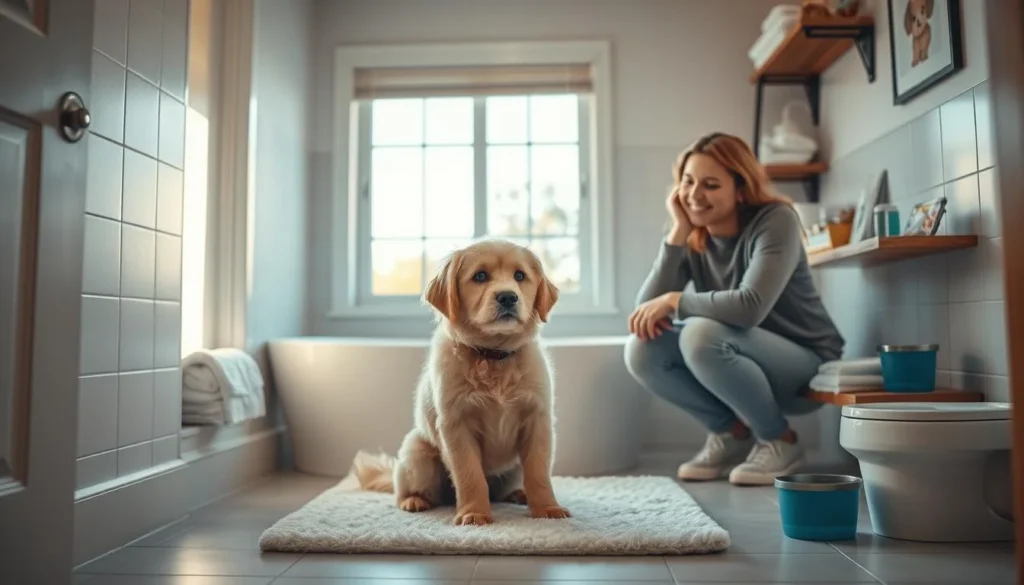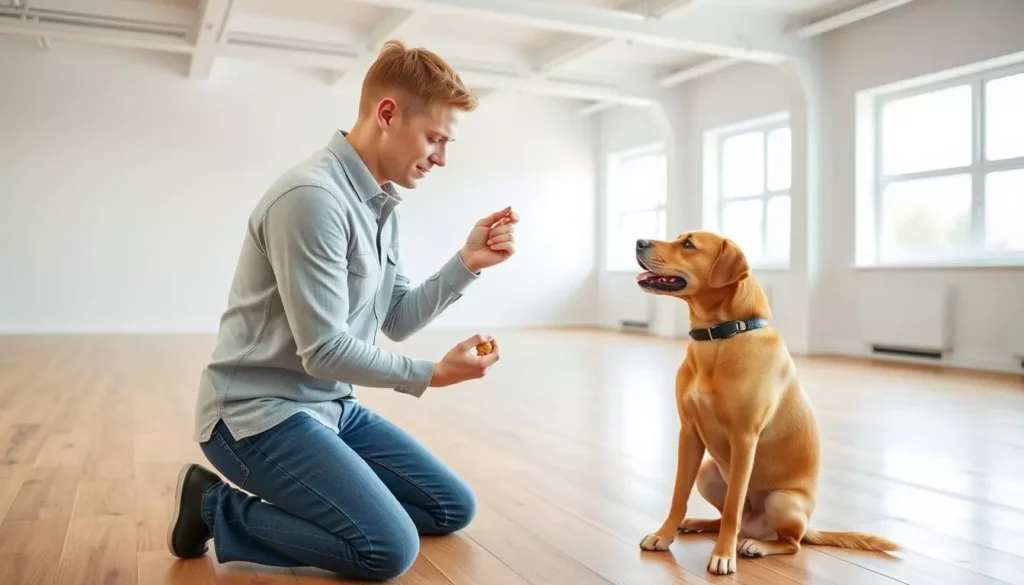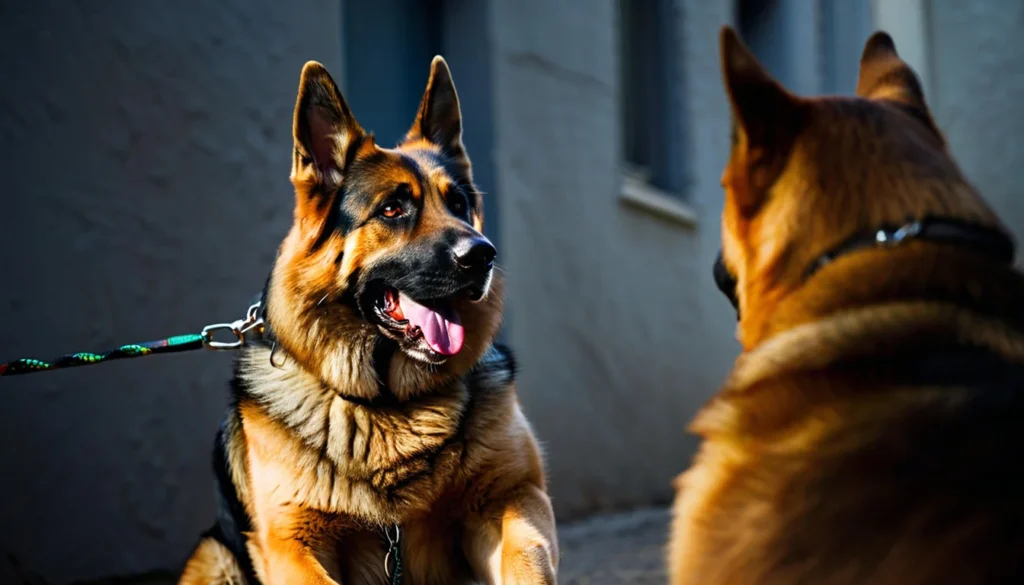I still remember the first time my Labrador, Max, froze over a squeaky ball and growled at my hand. My heart raced—how could a game turn into something so tense? That moment taught me that toy guarding in dogs can sneak up on any household, even during play we think is harmless.
I learned quickly that using force only made things worse. With calm, consistent dog toy aggression training, small daily steps helped. Trading a toy for a high-value treat, practicing "drop it," and starting with low-value items rebuilt trust. These strategies are about safety and showing my dog that letting go leads to something better.
Key Takeaways
- Toy guarding in dogs is a form of resource guarding that can show as growling, snapping, or biting.
- Positive, reward-based dog toy aggression training works better than punishment.
- Start with low-value items and use high-value trades to teach safe drop-and-release behavior.
- Manage the environment: put away highly desirable toys while you train.
- Seek a certified trainer or behavior consultant if biting continues or escalates.
Understanding toy aggression in dogs and why it happens
Let's talk about when a dog guards an object. This behavior, known as toy aggression or resource guarding, happens when a dog gets upset if someone tries to take something it values. This can be anything from a bone to a sock.
Instinct and experience play big roles in why dogs guard things. Animals have always protected what's scarce to survive. Things like genetics, early life, past experiences, and stress can make a dog more protective of its stuff.
It's easy to see what triggers guarding. Toys, chews, and even favorite spots like the couch can set off a dog. A dog might also guard a person if they see that person as a valuable resource.
Play can sometimes teach a dog to guard. Games like tug-of-war or fetch can get a dog excited. If the game ends without calming down, the dog might start to think that excitement means they should guard their things.
Here are some important points and quick fixes for dealing with resource guarding and toy aggression in dogs.
| Issue | Why it happens | Practical first steps |
|---|---|---|
| Toys become high-value | Reinforced by winning at tug, unregulated fetch, or praise during play | Rotate toys, teach calm endings, offer trades with high-value treats |
| Chews and food guarding | Competition history or resource scarcity | Feed in separated spaces, use multiple bowls, manage access |
| Stolen items (socks, laundry) | Novelty and human chase make objects more prized | Secure laundry, avoid games that encourage retrieval of forbidden items |
| Space guarding (beds, couch) | Perceived territory and comfortable resting sites | Establish consistent rules, provide alternative comfy spots |
| Play-induced guarding | High arousal without structured cool-down | End play with calm cues, practice "drop it" and trade games |
Recognizing the signs of toy aggressive behavior in dogs
I keep a close eye on dogs when owners talk about play issues. Spotting toy aggression early is key. Small changes in how a dog stands or looks can signal a shift from play to guarding.
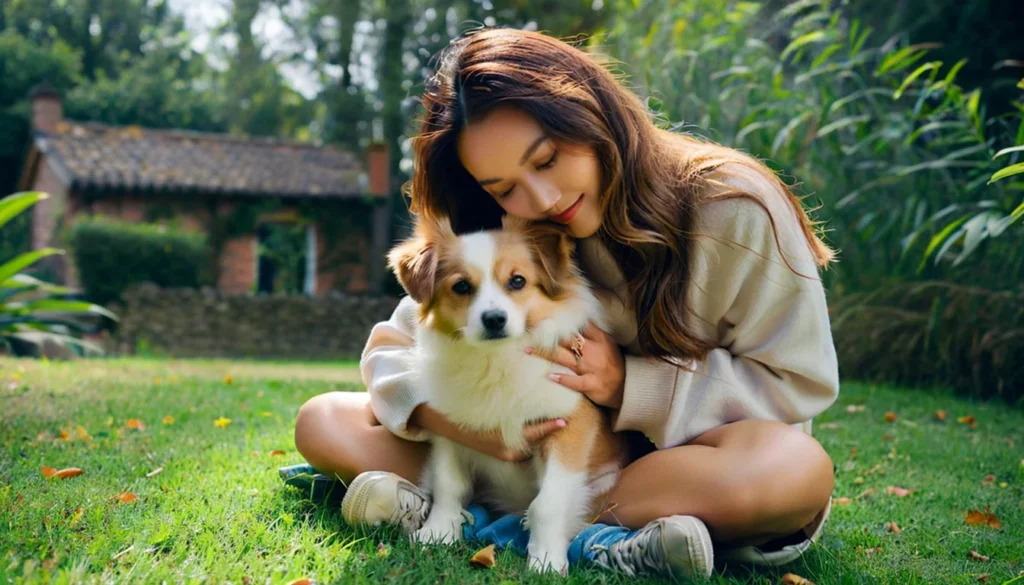
I start with small signs so you can catch trouble early. These signs can be missed in the noise of play or around kids.
Subtle warning signals
Look for hard stares, freezing, or a slow lip lift. A dog might take a toy and stand in the way. Some dogs eat quickly or hide a toy to keep it safe. Signs like side-eye, pinned ears, and a stiff body over a toy show tension.
Overt signals
Growling is a big warning sign. You might see snapping, air snaps, lunging, or bites if warnings are ignored. Dogs that chase others away or snap during play show aggressive behavior that needs attention.
When escalation becomes dangerous
Risks grow if warnings are ignored, especially around kids or strangers. Health or stress issues can also play a part. If incidents repeat, get worse, or cause breaks, act fast.
Keep a record of what you see: the situation, what triggers it, and the exact behaviors. This helps you understand how serious it is and what steps to take. It's important for managing toy aggression in pets and recognizing toy guarding in dogs before it's a big problem.
Assessing risk and when to involve a professional
I start by looking at the pattern and danger of the behavior. A quick check of bite history, how often incidents happen, and whether growls escalate to snaps or bites gives a clear sense of risk. If a dog shows repeated attempts to bite or the intensity climbs, I treat that as a red flag and move toward professional help.
Next, I consider medical causes that can change behavior overnight. Pain, dental problems, thyroid imbalance, and neurological issues can make a calm dog suddenly guard its toys. I recommend a full veterinary exam to rule out physical drivers before launching into a long training plan.
When I need outside support, I weigh the type of specialist to hire. For clear safety risk, complex histories, or failed home efforts, a credentialed professional makes the difference. A certified dog trainer can create stepwise exercises for basic guarding. A certified behavior consultant or a vet behaviorist for dog aggression handles entrenched cases and offers diagnostic insight and staged interventions.
I use a short checklist to decide when to call for help. It covers bite frequency, severity, medical findings, and household risk factors like children or fragile adults. If any item is high risk, I ask: when to call a behaviorist for toy guarding? My answer is simple—call sooner rather than later.
Below I compare typical situations and the recommended professional to consult. This helps me pick the right expert and get a tailored, safe plan in place quickly.
| Situation | Signs to look for | Who I contact | What they provide |
|---|---|---|---|
| Occasional lip lift, no snaps | Rare warnings, calm after interruption | Certified dog trainer | Behavior plan, trade-and-reward exercises, owner coaching |
| Frequent growls, occasional air snaps | Repeated warnings, rising tension around toys | Certified behavior consultant | Detailed assessment, desensitization program, safety protocols |
| Attempts to bite, bites occurred, children present | Escalation to contact bites, high household risk | Vet behaviorist for dog aggression | Medical evaluation, behavior diagnosis, supervised interventions |
| Sudden change in behavior | New aggression after illness or injury | Veterinarian then vet behaviorist for dog aggression if needed | Medical treatment, pain control, coordinated behavior plan |
Immediate safety and management strategies for toy guarding in dogs
First, I make sure everyone is safe while I work on changing the dog's behavior. Simple steps can help manage toy guarding in dogs. I separate valuable items, watch interactions, and set up routines for dogs to follow.
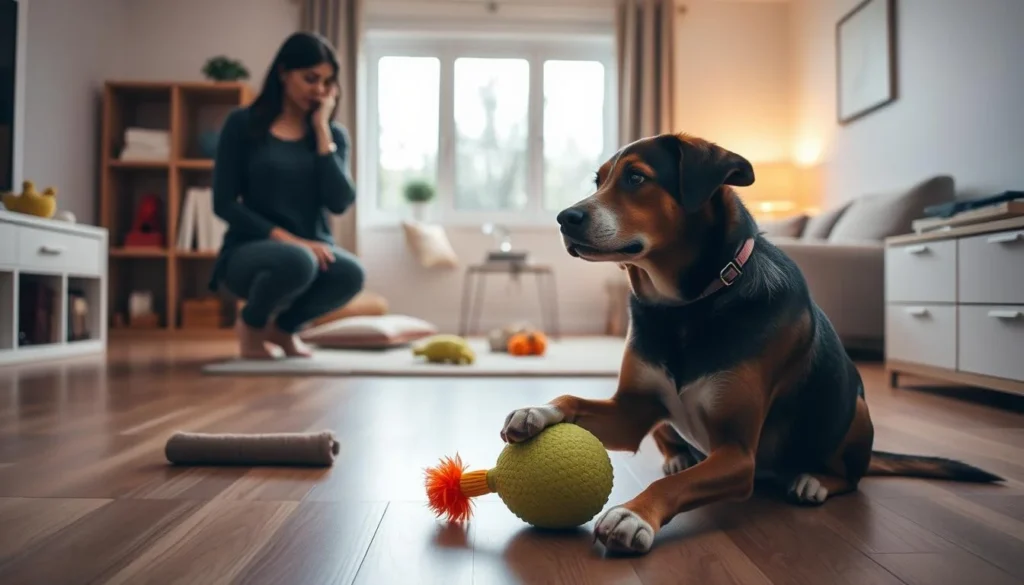
I keep toys and other tempting items out of reach when I'm not watching. If a dog has a favorite chew, I give it only in a crate or gated area. Starting with less-guarded items helps me build success before moving to favorites.
I use calm exchanges instead of conflict. I offer a treat of equal or higher value and praise the dog for releasing an item. This teaches the dog that giving up items leads to good things, helping prevent aggression.
I manage feeding and chewing by creating separate spaces. Dogs eat in different rooms or behind baby gates. No free-feeding and rotating chew toys help reduce obsession with any single item.
In homes with more than one dog, I remove high-value items before play starts. I supervise interactions, plan one-on-one time, and set up separate areas for play or feeding. These steps help prevent escalation and support long-term success in managing toy guarding.
Below is a compact comparison I use to choose management tools and actions based on risk and practicality.
| Risk Level | Immediate Action | Management Tools | Goal |
|---|---|---|---|
| Low (warning signals only) | Pick up loose toys; supervise play | Rotate toys, calm praise, trade treats | Prevent escalation and build trust |
| Moderate (growl, stiffening) | Remove triggers; separate spaces during meals | Gates, crates, separate feeding zones | Reduce confrontations and allow training |
| High (air snaps, lunging, bites) | Ensure physical safety; consult a pro | Veterinarian check, certified trainer, behavior consultant | Secure environment and guided behavior change |
Positive training foundations to change guarding behavior
I always say: never force a dog to give up something they love. Forcing them can hurt and break trust. Gentle trades and rewards work better than punishment to change how they feel about things.
I use three main strategies for dog toy aggression training. First, I avoid punishment to prevent suppressing warnings and increasing bite risk. Second, I teach calm exchanges with a reliable trade for drop it cue. Third, I build positive feelings towards people coming near through counterconditioning for toy guarding.
Why harsh measures make guarding worse
Punishing a growl can teach a dog to be silent, not safe. They might stop warning and start biting. I aim to keep everyone safe while keeping those early warnings. This means managing space and using slow, controlled practice instead of confrontation.
Building trust with counterconditioning and desensitization
I pair my approach with high-value rewards to make the dog expect something good when I come near. Start at a distance that doesn't stress them and toss rewards while they eat a chew. Small steps and calm sessions change how they feel about people near their prized items.
Teaching a reliable trade for drop it cue
I train the swap by offering a high-value treat just before or the instant they release an object. Reward heavily when they give up the toy and then, when right, return it to show giving up means gaining. Over time, they learn "drop it" and a trade for drop it cue predict a valuable outcome.
I suggest gradual progression and consistent rewards during dog toy aggression training. If progress stalls or the risk seems high, I seek help from a certified trainer or veterinary behaviorist. They can tailor steps and supervise practice.
Step-by-step exercises to reduce toy possessiveness
I help owners tackle guarding in small, safe steps. Start with items your dog doesn't care about. Use calm tones, high-value treats, and short sessions to keep your dog in control. Move forward only when your dog remains relaxed.
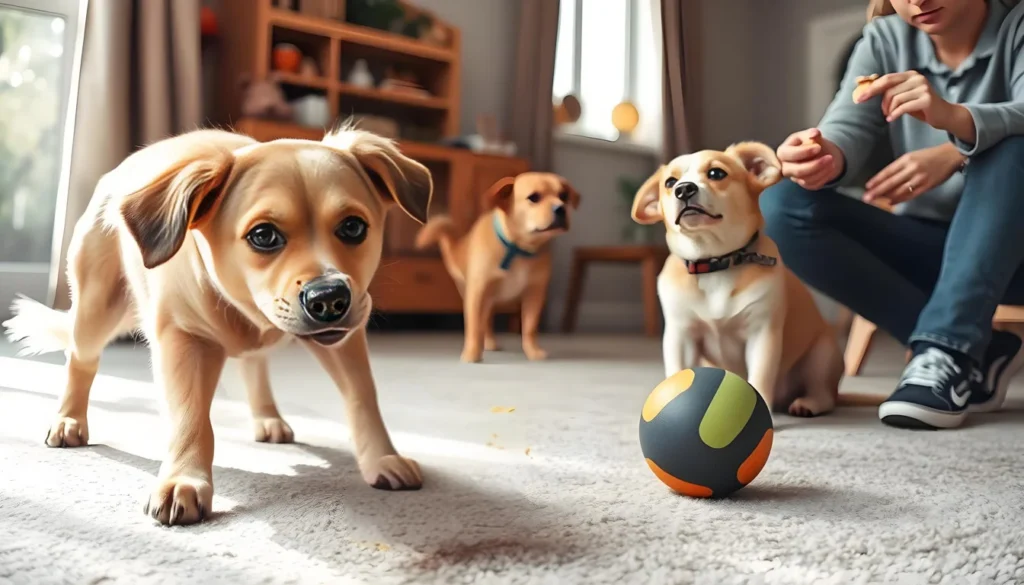
Start with low-value items and gradually increase value
Begin with a worn plush or old ball. Offer the item and then a tasty trade. If your dog releases willingly, reward them with a high-value treat and praise. Repeat this until they drop the item without tension.
Then, move to slightly more desired toys in small steps. If your dog stiffens or shows warning signs, go back to easier items. I never force takeaways during these drills.
Practice "leave it" and "drop it" with rewards and praise
I teach "leave it" away from toys first, using kibble and closed-hand holds. Once reliable, I add "drop it" with a toy in mouth and trade for something better. Short repetitions build clarity and trust.
Keep sessions low arousal. After active play, let the dog settle before practicing drop it training. Calm timing makes the cue more effective in real situations.
Bowl games and multiple-bowl progression for food-related guarding
For food guarding, set up bland food in one bowl and a higher-value bowl a few feet away. The dog learns that leaving one resource leads to a better option. Gradually increase distance and value as the dog moves freely between bowls.
This bowl game resource guarding exercise uses predictable rewards to reshape choice. Stop the exercise if the dog growls or lunges. Use a leash or gate for safety until behavior is reliable.
Controlled approaches: how to approach a dog safely while it has an item
I never rush in. Approach to a distance the dog tolerates, then toss a treat or put another toy down and back away. The goal is to associate approaches with gains, not threats. Use gates and leashes during early practice for control.
If the dog shows aggression, halt and consult a certified trainer or veterinary behaviorist for tailored steps. Repetition, restraint, and a calm reward system reduce guarding over time.
Preventing toy aggression in dogs through responsible play and routines
I teach owners simple ways to stop guarding in dogs. Making small changes in play and setting clear rules helps a lot. We focus on safe tug and fetch, winding-down habits, and consistent toy rules.
How to play tug and fetch without teaching guarding
I show how to start and stop tug games carefully. Use a cue to start and a firm command to end. Reward your dog for releasing the toy to teach them it's good.
For fetch, I swap the toy for a treat or throw it again. This teaches dogs to expect trades, not to keep everything. Start with low-value items and increase the value as they learn.
Winding down after play to avoid arousal-linked guarding
I slowly move from energetic games to calm ones. After tug or fetch, we do leash walks, slow petting, or a short sit-stay. This helps prevent toys from causing guarding.
Make the end of play predictable. A consistent wind-down helps avoid guarding when play stops.
Consistent rules around toys, chews, and who can initiate play
I suggest picking up toys after play and limiting access to high-value chews. Decide who starts and stops play to avoid confusion. Following the same routine helps dogs feel secure and reduces guarding.
Rotate toys and control who gets the most prized items. This reduces stress and unpredictability around toys.
I've seen many clients improve with these methods. By playing responsibly, following routines, and exchanging toys thoughtfully, owners can reduce fights and build trust with their dogs.
Behavior modification tools and aids that can help
I mix simple aids and structured exercises for toy aggression. Small steps and rewards teach dogs to trade safely. I start with low-value items and gradually increase, keeping it calm and predictable.
Using food rewards and puzzle toys
I use food rewards to teach trade-offs. Each exchange gets a treat, showing the dog that giving up a toy is better. Puzzle toys and feeders spread value, reducing focus on one item.
Crate management and toy rotation
I store high-value toys and only allow them in supervised sessions. Crate management helps with guarding issues. I rotate toys weekly to prevent obsession.
Barriers, leashes, and safe separation
I use baby gates and leashes for training. These tools help manage toy guarding and prevent escalation. In multi-dog homes, I separate during meals and give chews in different areas.
Enrichment to prevent guarding
I add enrichment to prevent guarding by offering various chew options and puzzle toys. This shifts focus away from one item. Replacing a guarded toy with a treat and praise teaches the dog to share positively.
Putting it together
For the best results, I combine food rewards, puzzle feeders, crate access, and barriers in a step-by-step plan. These tools support behavior modification for toy aggression. I monitor progress, reduce supports as the dog improves, and keep sessions short and clear.
Common mistakes owners make when dealing with dog toy aggression
Many owners make the same errors when their dog guards a toy. These mistakes often come from fear, impatience, or thinking dominance will solve the problem. But this approach can make things worse and even put people at risk.
I will outline the top pitfalls and explain why each one backfires.
Punishing a growl
Scolding or hitting a dog for growling teaches them to hide their warning. This is one of the most damaging mistakes. Punishing growls risks a sudden bite without any warning.
Forcing takeaways or “testing” a dog
Forcing takeaways can hurt you and make guarding worse. Owners often stick hands into bowls or grab toys to prove a point. This trains the dog to guard even harder.
Ignoring subtle signals
Freezing, side-eye, lip lift, and body blocking are early cues. Ignoring these signs lets tension build. Small signals warn you before things get worse.
Repeated errors and safer alternatives
Free access to high-value items, free-feeding, and leaving tempting objects around all invite guarding. I recommend removing triggers, offering calm replacements, and teaching trade games with rewards. These steps reduce the need for confrontation.
When to get help
If you feel unsafe or the dog shows escalating behavior, seek help. A certified trainer or a veterinary behaviorist can guide you. Early, professional guidance prevents common mistakes from becoming habits.
Conclusion
I've explained why toy aggression is a natural instinct in dogs. It can be managed with positive work. Using trades, practicing the "drop it" cue, and starting with low-value items helps. This gives your dog clear reasons to release objects.
Managing toy aggression also means controlling high-value items. Use progressive training to teach your dog that giving up a toy leads to something better. This way, they learn to share.
Safety is key: remove triggers, separate feeding when needed, and never punish growls. Always check for medical causes with your vet. If biting continues, call a certified trainer or veterinary behaviorist. These steps help everyone while building trust.
Prevention is as important as correction. Calm play, winding-down routines, and consistent rules around toys help. Rewarding exchanges also prevent toy aggression. With patience, most dogs can learn to share without guarding.


